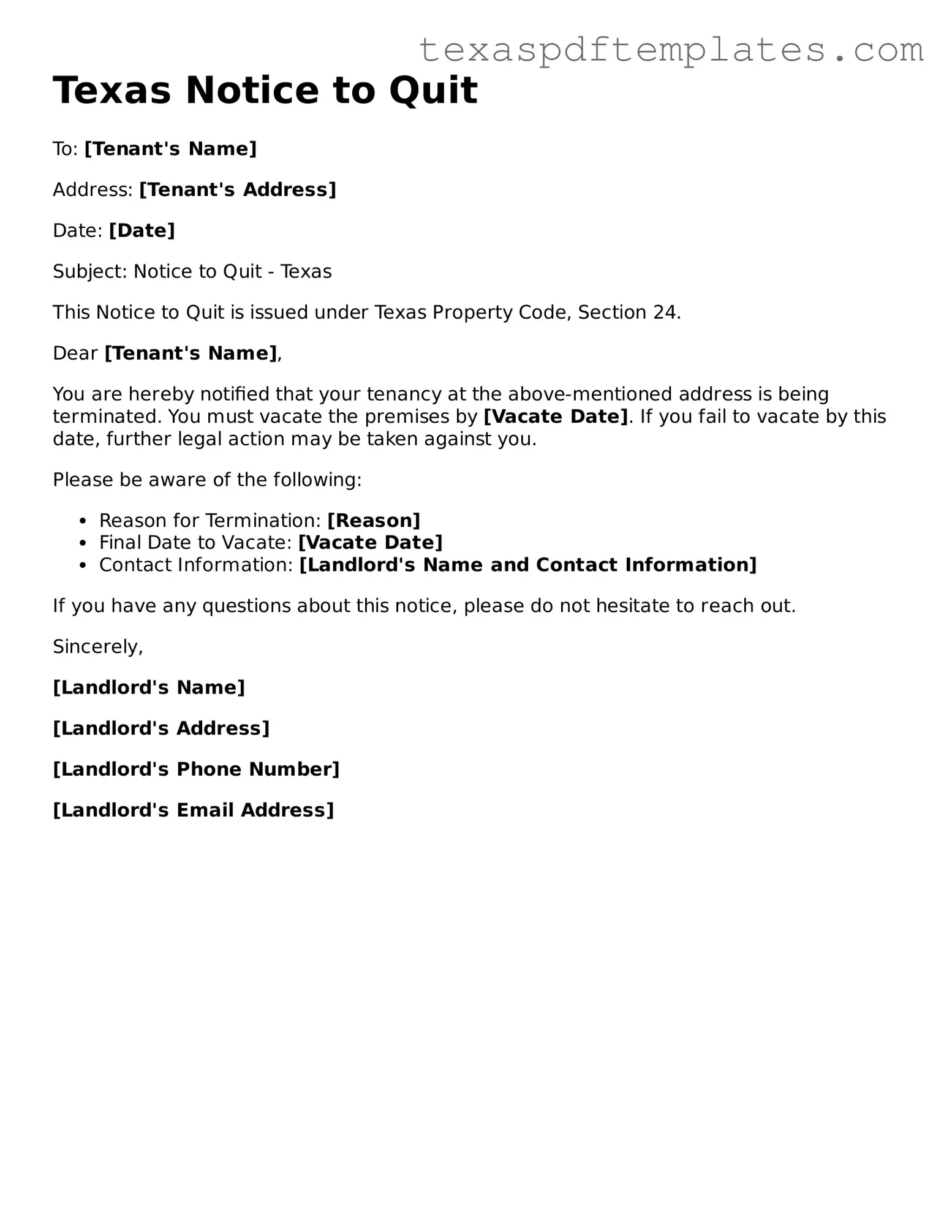Attorney-Approved Texas Notice to Quit Template
The Texas Notice to Quit form is an essential document used by landlords to formally request tenants to vacate a rental property. This notice serves as a critical step in the eviction process, ensuring that tenants are aware of their obligations and the timeline for leaving the premises. Understanding this form is vital for both landlords and tenants to navigate their rights and responsibilities effectively.
Open Form
